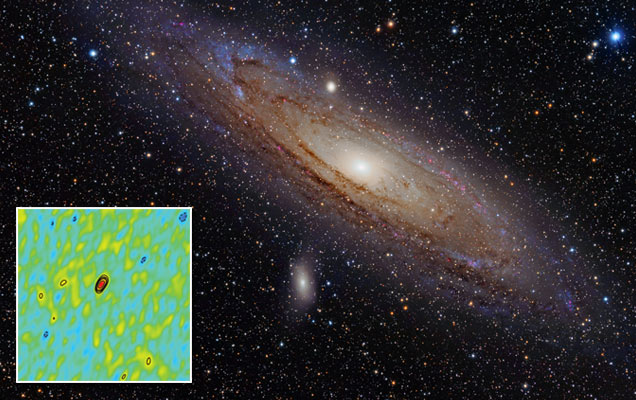
Credit: Adam Evans/Creative Commons; (inset) M. J. Middleton et al., Nature, Advance Online Publication (2012)
On 15 January, the XMM-Newton satellite detected a bright source of x-rays in the Andromeda galaxy (main image), 2.5 million light-years from Earth. As astronomers report online today in Nature, the x-rays arise from hot gas swirling around a black hole (radio image, inset) that tears the material from an orbiting star. The object is roughly 10 times as massive as our sun and gobbles matter at nearly the maximum possible rate. Four similarly ravenous black holes are known in the Milky Way, but dust in the galaxy's disk obscures observations; so studying the newfound beast in Andromeda may offer fresh insight into how black holes accrete material, a process that feeds the supermassive black holes powering quasars billions of light-years away.
See the website for more details: http://news.sciencemag.org/sciencenow/2012/12/scienceshot-x-rays-reveal-new-bl.html?ref=hp (SY)
